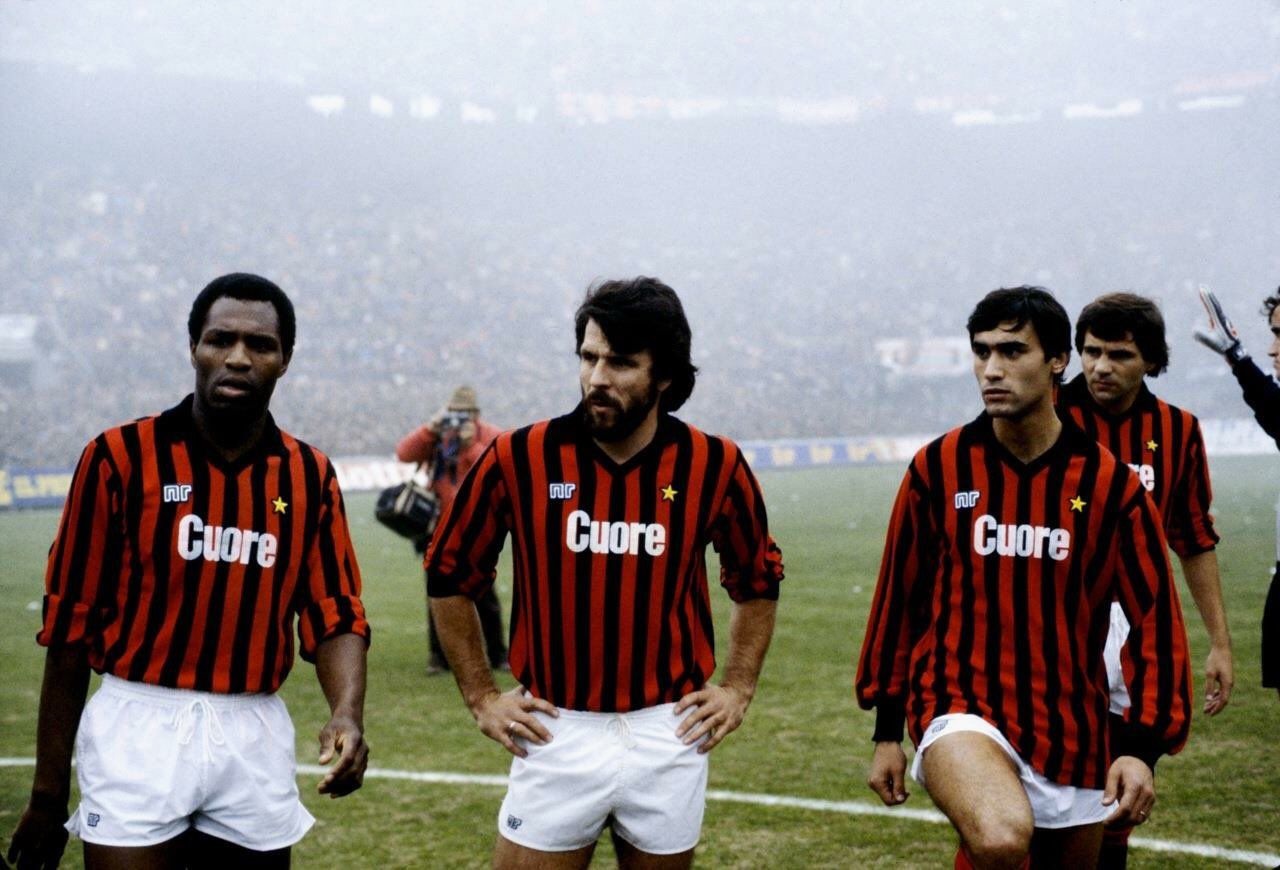AC Milan’s kits are a very important part of their identity. Ever since the club was formed back in 1899, their famous red and black stripes have adorned their shirts and are the origin of their most commonly used nickname. There are other teams who wear red and black, but ask anyone who those colours belong to and Milan will be their answer. It’s generally hard to go wrong with a striped kit, but some of their jerseys over the years have been better than others. Here are our top five.
5. 1983-1984
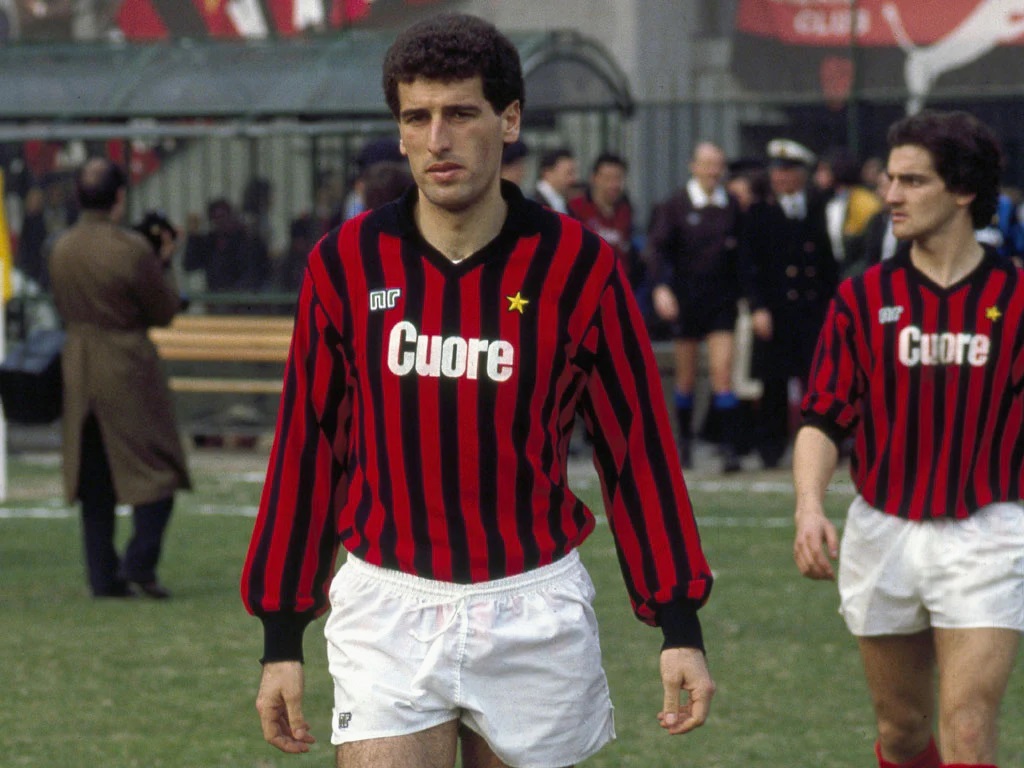
Italian brand Ennerre reigned supreme in Serie A in the 80s and has come to symbolise an era when football was everything that it is not today. Niccola Racugglia, himself a former player, created the brand and set about dressing the best of Serie A and Serie B in high quality woolen jerseys. His designs were simple but carefully and beautifully crafted, akin to the finest Italian tailoring. Milan had just won promotion from Serie B and celebrated their return to the top flight by adding a classy and era-appropriate fold down collar to their previous shirt. Oil producer Cuore also replaced Hitachi as main sponsor, giving the very satisfying all-Italian triumvirate of club, kit maker and shirt sponsor.
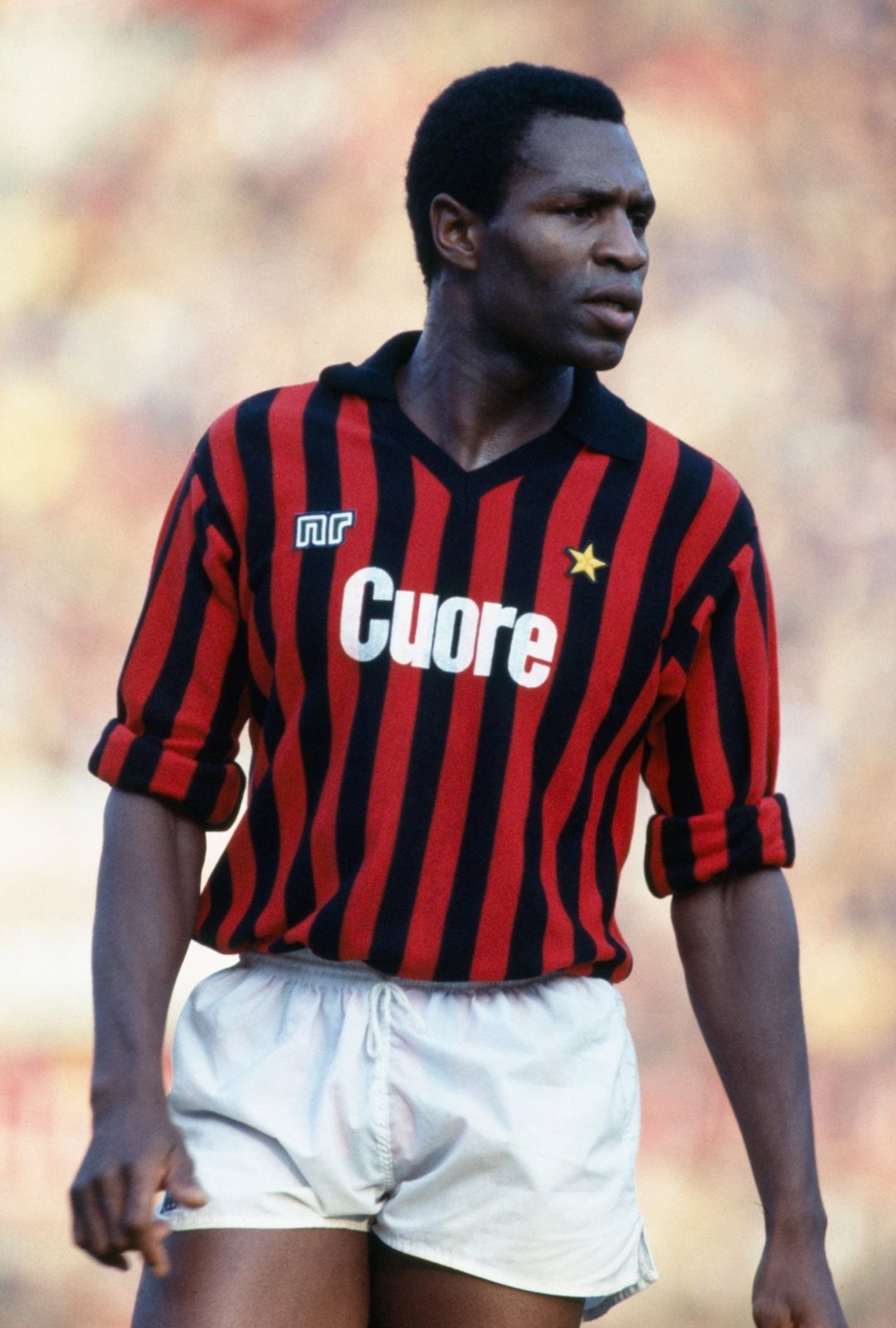
The football they played in the 83-84 season wasn’t of the same standard as the jersey unfortunately. Luther Blissett had been brought in to provide goals but could only muster 5 in 30 games, as the club finished the season in 8th and promptly sent Blissett back to Watford. They also said goodbye to the fine craftsmanship of Ennerre at the end of that campaign, their next kits provided by Rolly Go.
4. 2019-2020 Special Kit
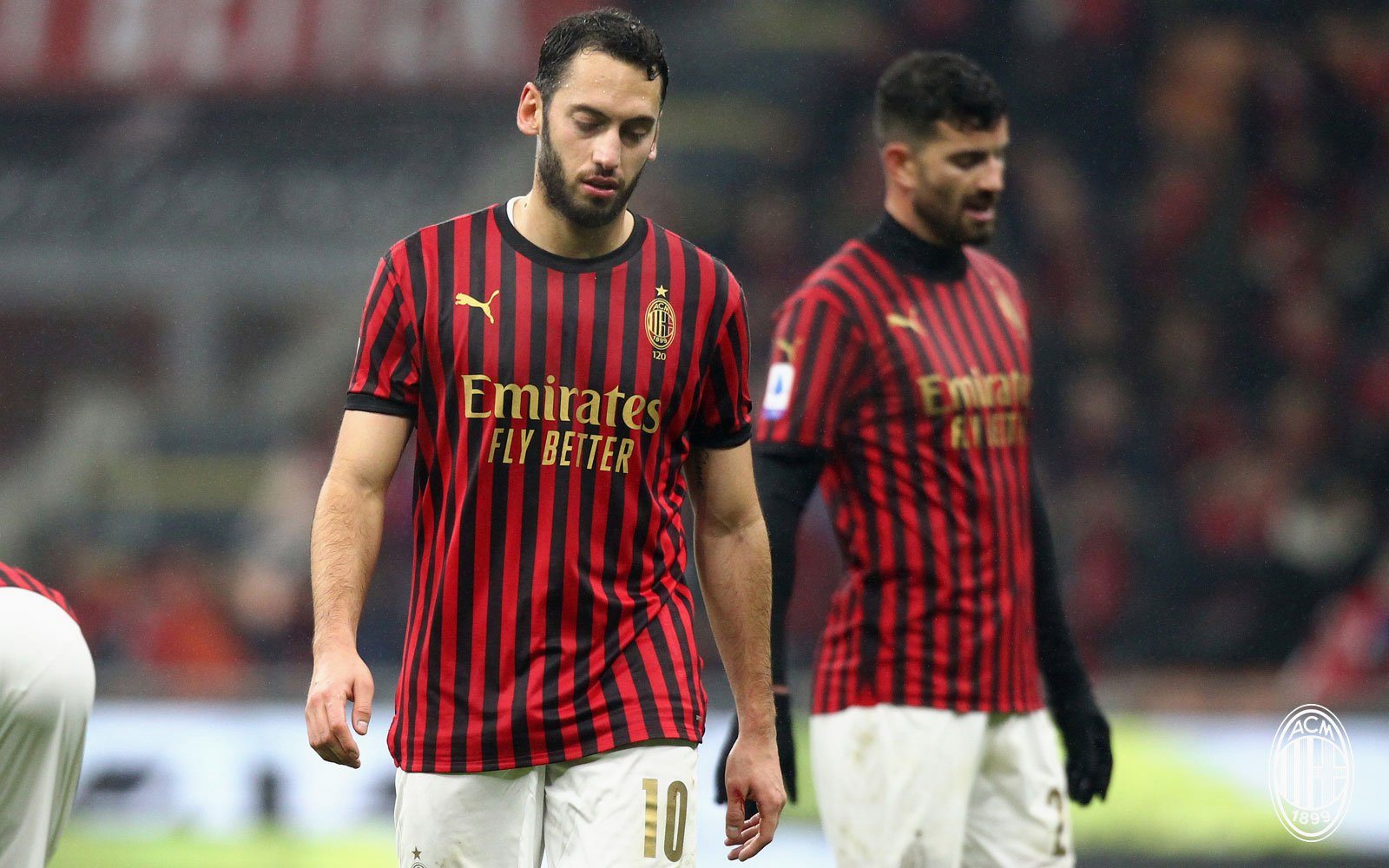
From the oldest to the most recent shirt on our list, this anniversary effort stands out as Puma’s best contribution to the club since becoming technical sponsor in 2018. Since the late 80s, Milan’s trademark red and black stripes have become a lot thicker compared to their early days. For the centenary in 99 Adidas they narrowed them down again, and in 2019 Puma repeated the trick to mark 120 years of their existence. This old school look worked great on the home kit, but even better on the special edition. What was special about it were the gold logo applications, the outlined crest in particular.
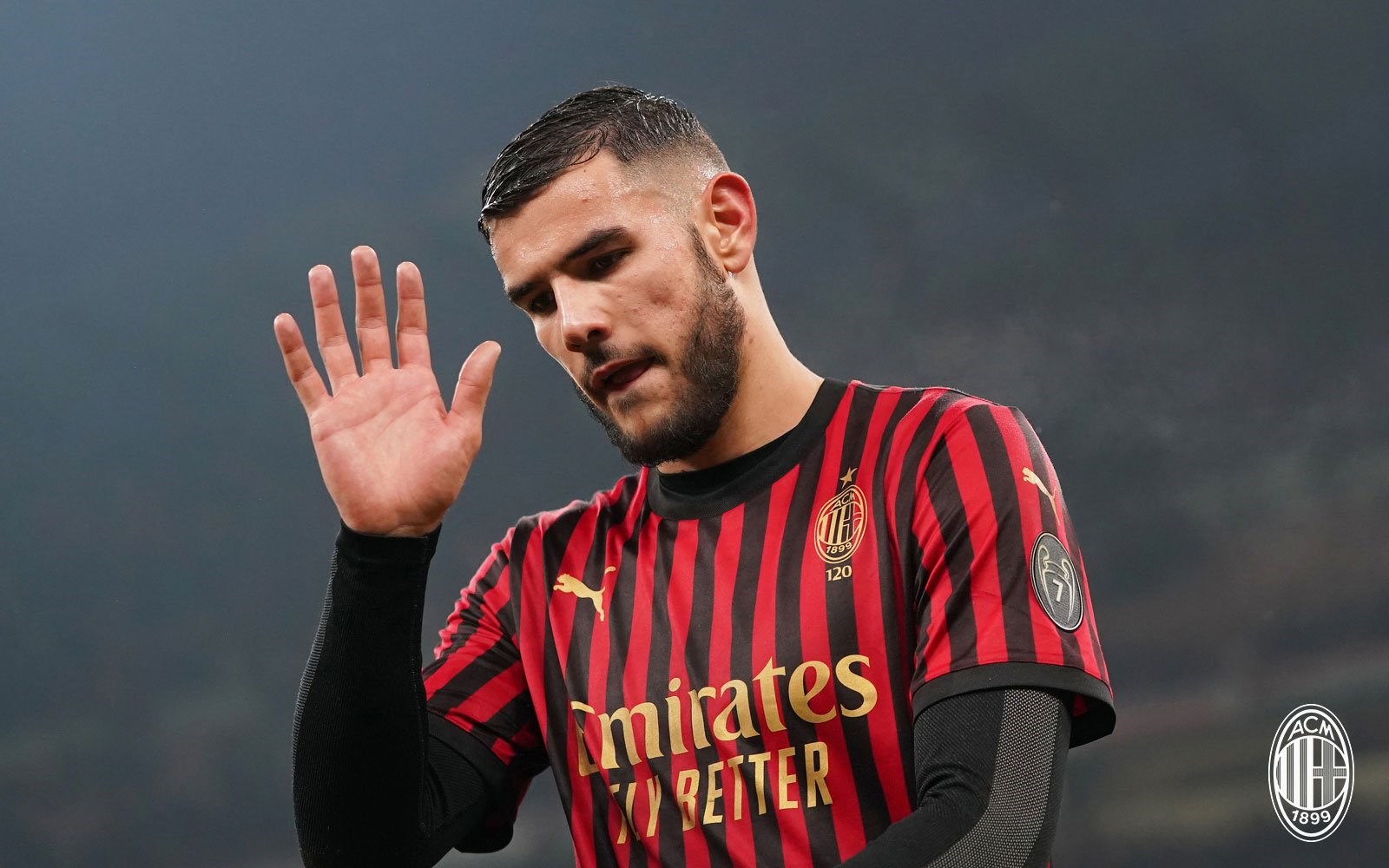
Only worn once, this jersey ranks among the best one-off kits of any club, not just Milan. The shirt definitely outshone the occasion, a 0-0 draw with Sassuolo in which Théo Hernandez had a goal ruled out for a hand ball in the build up. The season it appeared in wasn’t much better. Milan finished in 6th place, adding extra matches to their 20-21 calendar in the form of Europa League qualifiers, and lost both derbies against Inter. At least the shirt was a positive.
3. 1998-1999
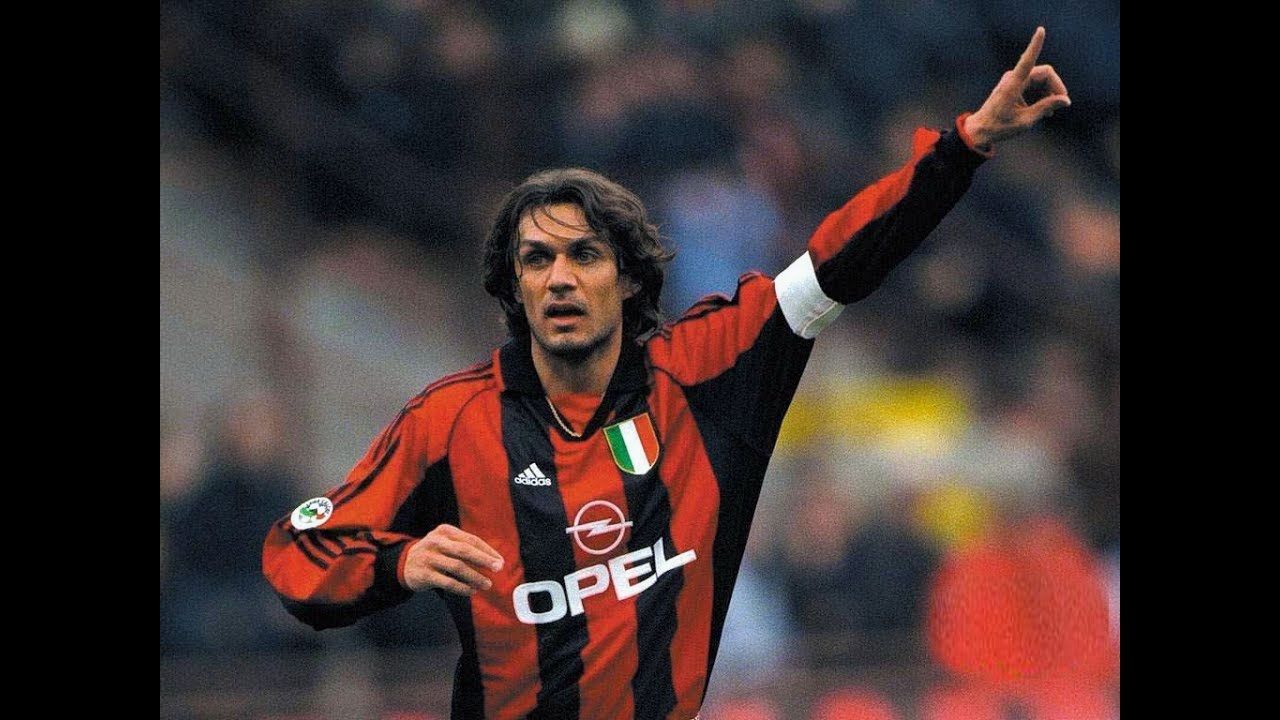
At the time it was released, Milan’s 98-99 home shirt was the most notable departure from the club’s traditional look. Adidas had come in to replace Lotto, their second stint following their run in the late 80s and early 90s. They decided that something of a change was in order, widening the pattern so that only three red stripes were present on the front. The raglan cut disrupted things further, as beyond the piping sling the seams, the top half of the sleeves were red with the undersides black. A mesh panel was included at the opening of the v-neck collar, a staple of the 90s kit aesthetic. In that period, Adidas included the nice touch of a club-specific jocktag on the shirts of all their teams, this one bearing the Milan crest on a Rossoneri striped background.
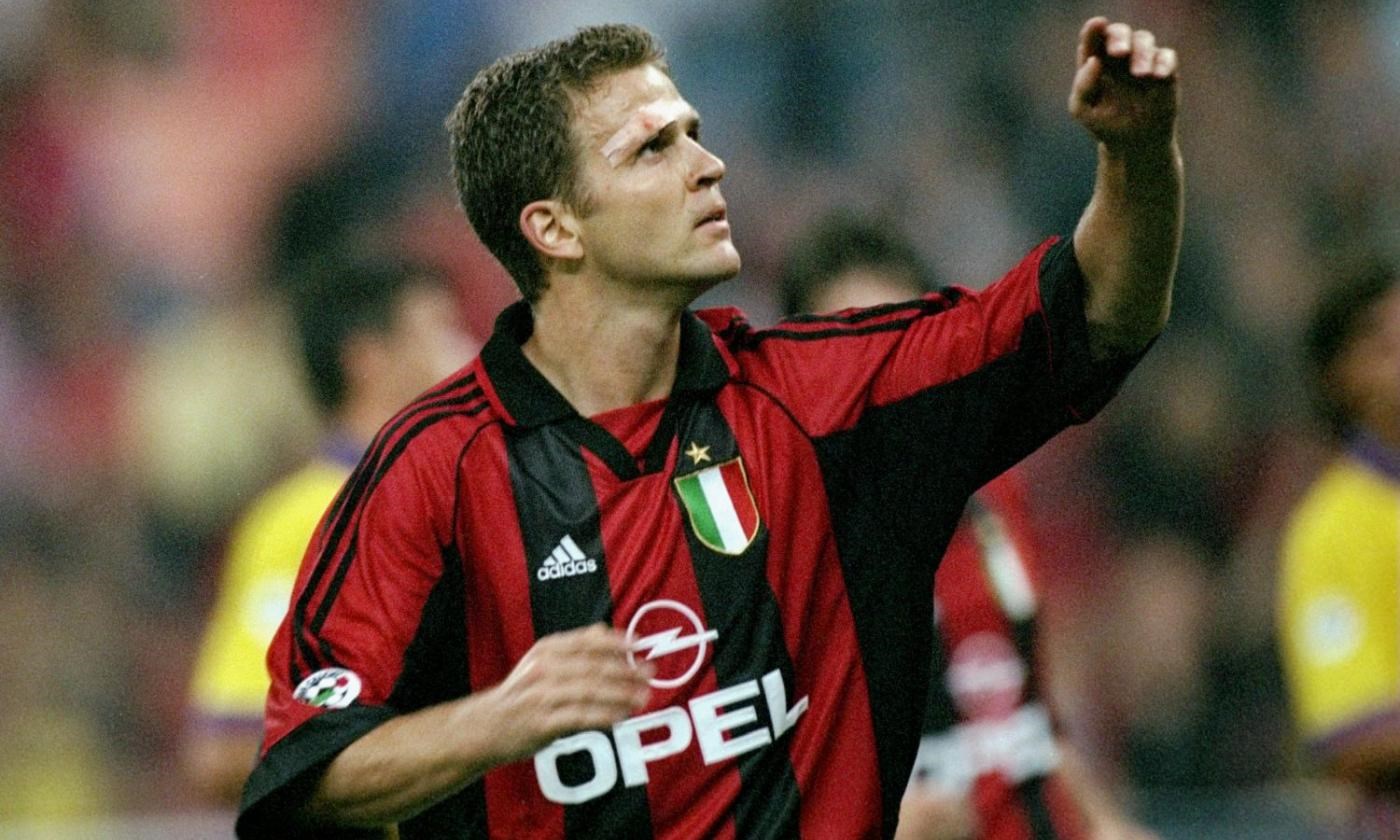
Despite the shirt being different, it maintained the key elements and it looked fantastic. The German input was visible from the three stripes and the Opel logo on the chest, but also on the pitch in the form of Jens Lehmann, Christian Ziege and Oliver Bierhoff. Lehmann had just arrived from Schalke in the summer of 1998 but his stay in the fashion capital was not a success. Injury and poor form cost him his place in the team, and he was sold to Borussia Dortmund in January. Bierhoff fared much better, his 19 goals firing Milan to the title as they pipped second placed Lazio by a single point.
2. 1987-1990
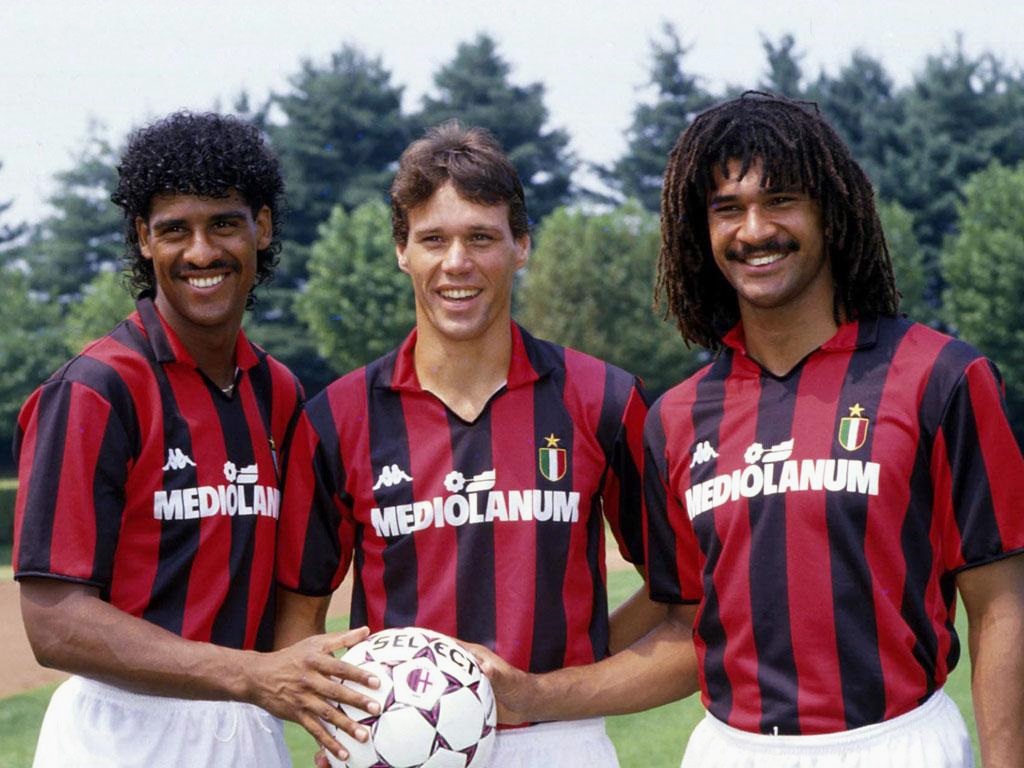
Back to the late 80s, when home-grown brands dominated the Italian football kit landscape. For the second half of the decade, Kappa were in charge and they did not disappoint. Plenty of stripes and a polo collar with an opening that left ample space for your gold chain to hang out over your shirt. The Mediolanum sponsor was placed high on the chest but the tucked-in look made it proportionate to the length. A calculated choice perhaps?

In those days Milan did not wear a club crest on their badge, preferring the single star earned by reaching ten league titles. The star sat alone in the 87-88 campaign but thanks largely to new arrivals Ruud Gullit and Marco Van Basten, a Scudetto badge had to be stitched on for the 88-89 campaign. Victory in the 1989 European Cup final saw a beautiful Champions League trophy patch – complete with shading – keep the star company the following year. It was the start of a golden age for the club and its fans, with a jersey worthy of all that success.
1. 1993-1994

Top spot goes to another Italian brand that has sadly become much less prominent in Serie A since their 90s heyday. Lotto produced a number of quality jerseys for AC Milan but their first turned out to be their best. Unmistakably Milanese, it requires a close look to see and appreciate the sublimated pattern worked into the stripes. Made up of the Lotto logo, the pattern adds an extra dimension to the design. Motta is also surely the best of the bunch when it comes to chest sponsors.
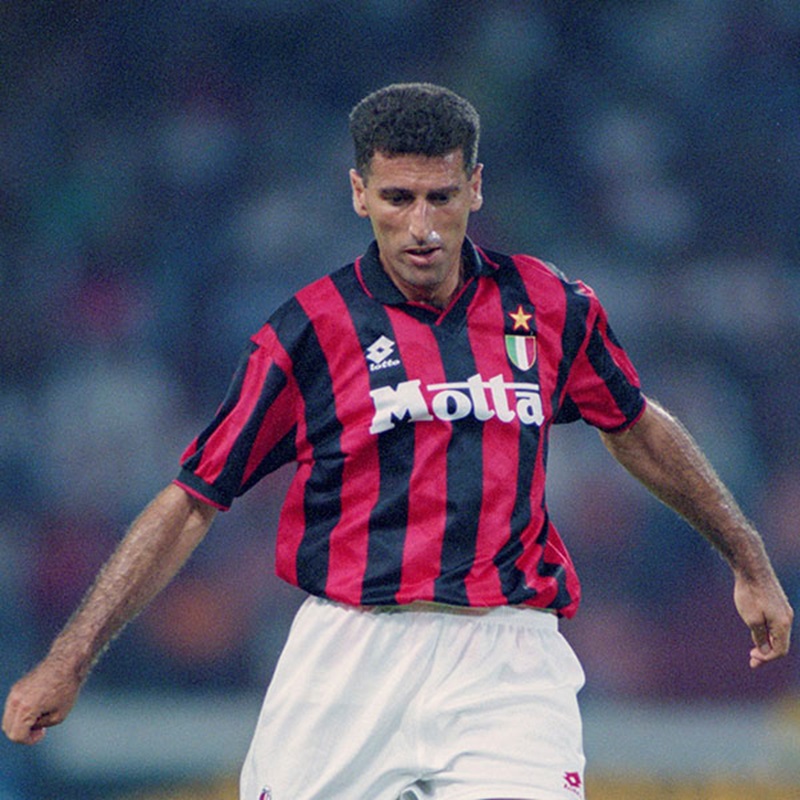
A team who play great football having a shirt whose beauty corresponds to the brilliance is a perfect recipe for nostalgia. This shirt was beautiful and Milan wore it en route to Serie A and Champions League glory, becoming only the second side ever to claim both titles in the same year. Their success can’t be debated, but their style of play couldn’t exactly be described as free-flowing. In Serie A, they didn’t score more than two goals in a single game, netting 36 in total over the 34 game season. They made up for this with their remarkable solidity at the back, conceding only 15 goals during the entire league campaign.

